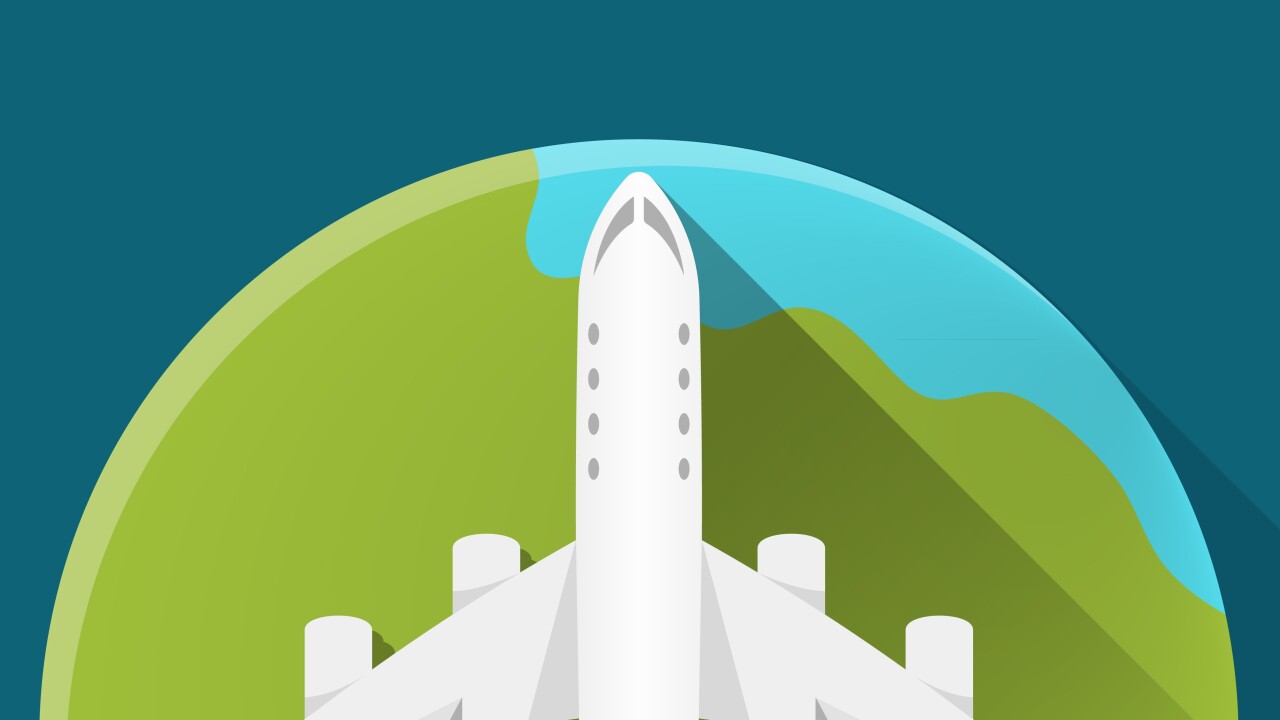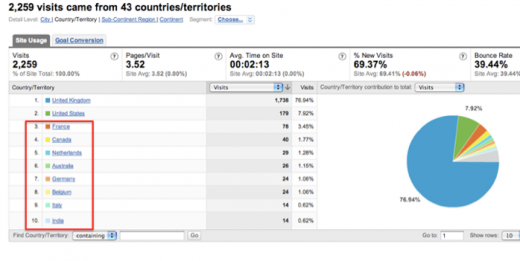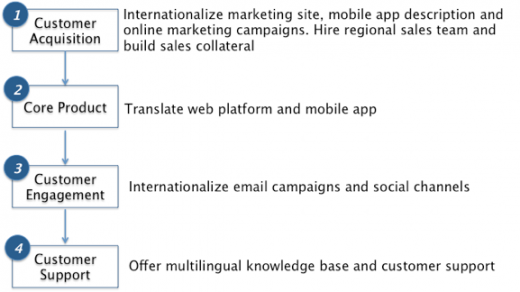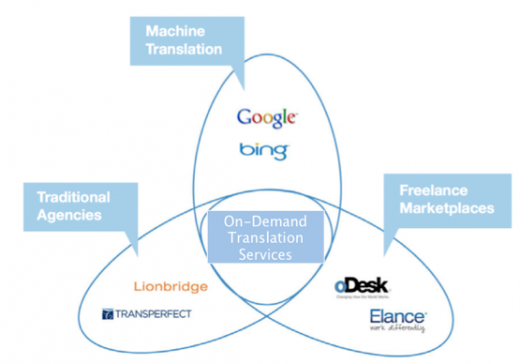
Kunal Sarda is a Techstars and Wharton alum, and co-founder of VerbalizeIt, a translation services platform for business.
Facebook’s $19 billion acquisition of WhatsApp has been a topic of many envious conversations. Less discussed is how a company founded in the US became the go-to messaging app in virtually every country besides the US.
The global dominance of WhatsApp was far from accidental. Founder Jan Koum says he built the product with a “global first” approach, and internationalized the app from its very early days to boost global discoverability and usability.
Are you ready to be the next global sensation, but don’t know where to begin your internationalization journey? Here is a step-by-step guide to get you started.
1. Determine Your Regions of Interest
The current performance of your English-only product in a foreign country is a strong predictor of success, were you to invest in internationalizing your product for this region. Turn to Google Analytics for your website, and app store analytics for visitors/ downloads by country.
Look below the fold of your home market to find your regions of interest. In addition, steal your competitors’ analytics by using Alexa’s Siteinfo to peak into where their customers are logging-in from.
2. Going Wide versus Going Deep
Should you spread your international efforts across multiple countries, or invest in optimizing your entire product for a particular region? Your product has four broad layers, as it relates to the attracting, engaging and retaining international customers.
To experiment with multiple geographies, companies will often translate their customer acquisition tools into multiple languages, and let customer metrics justify further investments into other parts of the product.
This works particularly well for mobile-first products, where translating your app store description into multiple languages drives searchability and increases the likelihood of being featured in the app store. Similarly, if your web product is primarily found through online search, translating your marketing site content and adwords campaigns directly drives international discoverability.
3. Choose between t8n, l10n and t11n
Time to enter buzzword country. Getting your product prepared for a foreign market can take one of three forms, in increasing order of cost and effort:
Translation (t8n): Keep It Simple, Silly. All aspects of your product, such as design, graphics and UX in your foreign product will remain the same as its parent. The text content will be translated to the native language of your new audience.
Localization (l10n): Go the extra mile. In addition to translation, you will start thinking about modifying UX elements such as images, graphics, layout and formats for numbers, dates and currencies.
Transcreation: Turn on Beast Mode. No expense or effort will be spared to ensure that your new customer feels as if this product was built just for him or her. You will no longer rely on the constraints of your parent product, and will invest in custom designs, UX and original content for your international customers.
Have an upfront discussion about where your company wants to fall on this spectrum. Most businesses approaching international markets for the first time start with translation, and work their way towards transcreation as they grow in size and experience in foreign markets.
4. Find the Right Translation Service
A quick Google search will reveal hundreds of translation services, all offering high quality, cheap prices and fast turnaround. Here is how they broadly break down, in increasing order of cost:
Machine Translation (Google Translate): Fast and cheap. Good for user-generated content, but quality is too poor for customer acquisition and retention.
Individual translators/ small agencies from Freelance Marketplaces (eLance-oDesk, Craigslist, Fiverr): Low cost but poor reliability and quality control. Good for translations on a very tight budget, if there is flexibility on timelines and quality, and you are willing to do the legwork on vetting and managing agencies.
A step-by-step guide for evaluating these translation services can be found here. Once you choose your translators, you will need to manage them via email, or through DIY “translation management systems” like Smartling and Transifex.
On-demand translation services (VerbalizeIt, Gengo): These platforms allow you to treat translation “as a service”. Use web-based portals, or embed API into your existing workflow to order translations that are delivered back to you in a few hours. These services eliminate the effort of finding and managing translators, and typically provide quality and turnaround SLAs similar to SaaS platforms. Pricing is standardized, however, and can be more expensive than hiring freelancers or small agencies.
Large Agencies (Lionbridge, Transperfect): Offer quality-assured translations with strong account management and services layers. These agencies are known for a high level of personal attention, but are significantly more expensive than other options. They also typically require long-term contractual agreements and somewhat archaic engagement models (it might take days to get a quote for translation).
Most agile technology companies approaching internationalization for the first time will choose to tap into on-demand translation services to outsource translation entirely, or hire and manage translators themselves through a translation management system.
5. Prepare Your Product
This is where the rubber meets the road. Your product team must work closely with the translation services partner to prepare your CMS and codebase. Multilingual capabilities on your website can be enabled in two ways. First, you can build and host a new and independent site in a foreign language, and simply redirect users to this site upon choosing a new language (using a drop-down or through IP detection).
Second, you can “proxy” different languages on to a single site. Translation proxy functions much like Google Translate for websites – you point your DNS entries towards a service that sits on top of your original website, and swap out original content in real time for foreign language content.
A huge benefit of translation proxy is that it is largely CMS agnostic, and removes the burden of product preparation from your team. However, you limit your options for translation services partners, as very few companies have the technology required to offer this solution.
Choose proxy, if you are in the “t8n or l10n camp”, and want to operate a hub-and-spoke content model, with all sites synced to your native language site at all times. On the other hand, opt for standalone sites if you are in the “t11n camp”, want different regional sites to operate somewhat independently, and have the resources needed to maintain content across multiple sites.
Preparing your apps for internationalization tends to be more cut-and-dry. Detailed how-to guides for preparing apps can be found here for Android and here for iOS.
6. Setup a Testing Environment and Get Feedback from Beta Users
With your translations underway, set up a testing environment for your internationalized product, and recruit a handful of your current users living in the target countries. These users can be granted access to your international product on staging, and can have a say in the content as it evolves. For mobile apps, use Testflight to provide international testers with early access to the internationalized app, before it hits the app store.
7. Launch, Measure and Iterate
Once your international product is pushed to production, keep an eye on the analytics for traffic and user flow. Any bottlenecks may signal the need to revisit translations, or to modify messaging or UX. App developers should keep a watchful eye on app store reviews, where you may find direct user feedback and suggestions for your international product.
One in ten companies are internationalizing their product today. These steps should help you join the ranks of businesses that no longer view geographic boundaries as impediments to reaching new customers.
Read Next: 13 steps to perfecting your app store optimization
Get the TNW newsletter
Get the most important tech news in your inbox each week.








